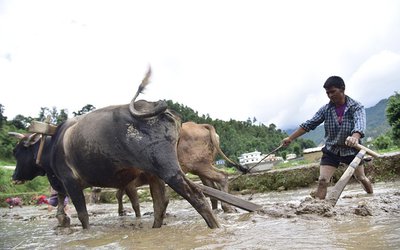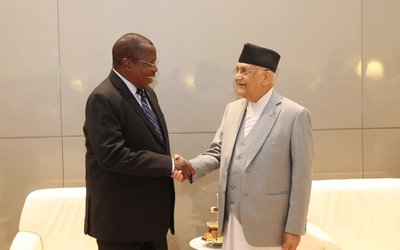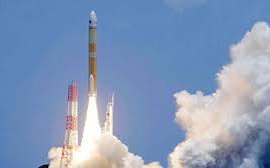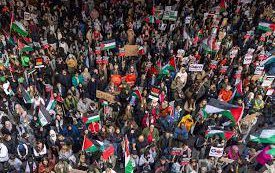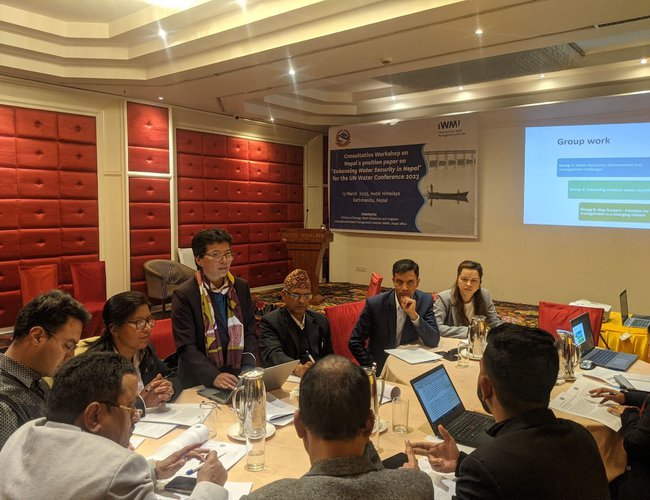
The narrative that Nepal is one of the water resource richest nations, second only to Brazil, is one that Nepalese adults are familiar with. Brazil came top, followed by Nepal, for unknown reasons.
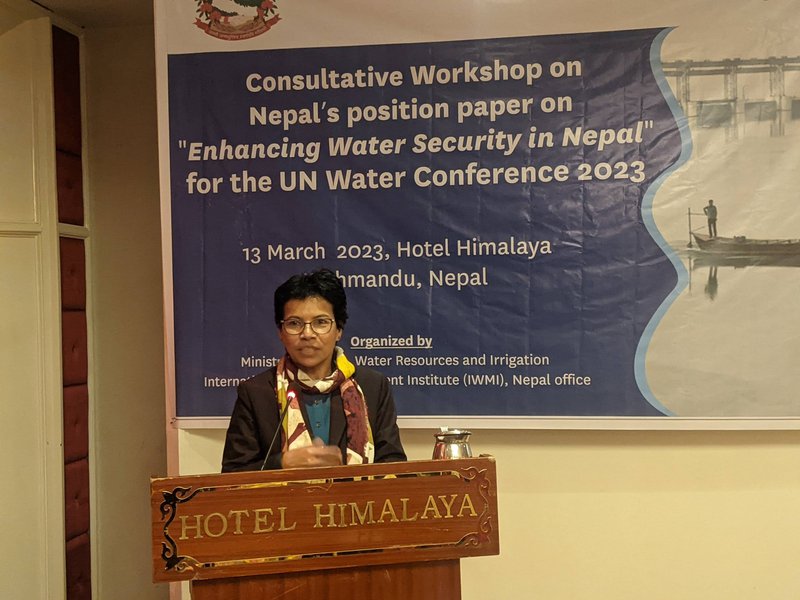
The situation is different. Both Nepal and the rest of the world lack water resources. More important than getting clean water is getting enough water for the majority of Nepalese. Similarly to this, Nepal's vast tracts of agricultural land are still without irrigation infrastructure.
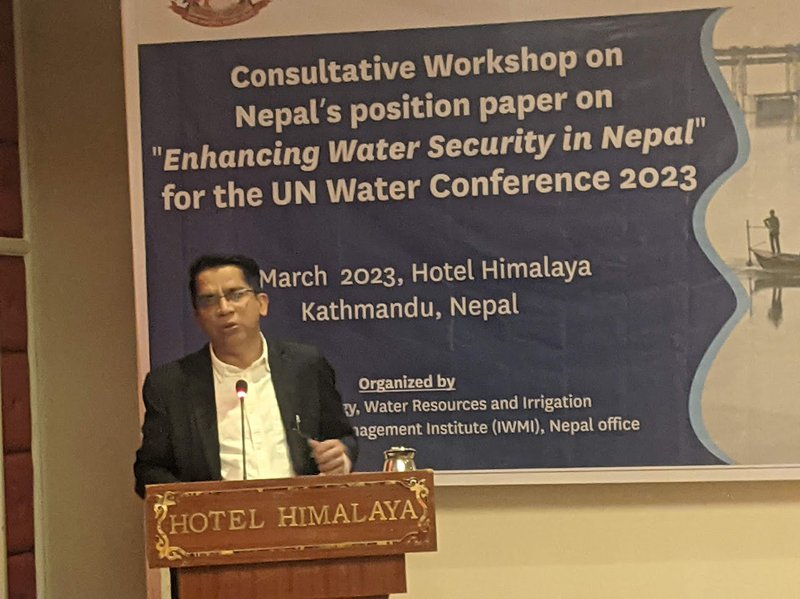
Almost a thousand Nepali children under the age of five pass away from diarrhea caused by unhygienic water every year, according to the World Health Organization. According to UNICEF data, 10.8 million people in Nepal lack access to better sanitation and 3.5 million lack access to even the most basic water services. With 71% of all water sources and 91% of those utilized by the poorest quintile being polluted with Escherichia coli bacteria, the functional status of water schemes and the quality of water remain poor.
The principal economic sector in Nepal is agriculture, which is dependent on it for more than 80% of the population. The plan for reducing poverty in Nepal acknowledges the importance of agriculture in achieving broad-based growth and raising the standard of living for the majority of people in the country. Nonetheless, 75% of Nepal's yearly rainfall falls during the monsoon season, which runs from June to September.
Nepal claims to have abundant hydropower, however during the winter it imports electricity.
1.80 million ha of the 2.60 million hectares (ha) of land under cultivation are irrigated, according to an Asian Development Bank analysis. Only 38% of irrigated land is irrigated year-round, despite 70% of surface water irrigation infrastructure's command areas being irrigated. The Department of Irrigation oversees the remaining 25% of irrigated land, with farmers managing 75% of it.
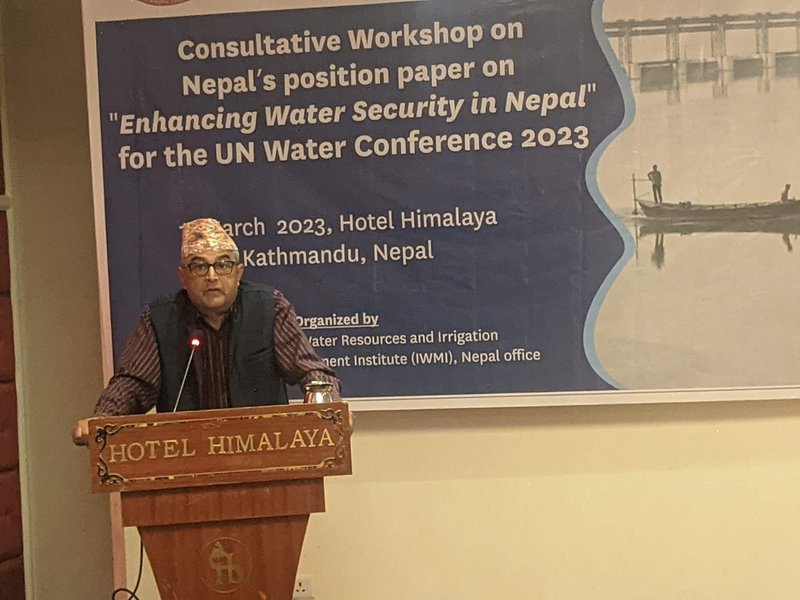
Writing a well-received Nepali position paper on the water is difficult in a nation where myth predominates over reality. The International Water Management Institute (IWMI)-Nepal, led by Dr. Manohara Khadka, has a strong team of experts and has once more given the Ministry of Energy, Water Resources and Irrigation (MoEWRI) the much-needed assistance in preparing Nepal's position paper, which is clear and succinct.
Prepared by MoEWRI with support from The International Water Management Institute (IWMI) Nepal, the Position Paper on Improving Water Security in Nepal, developed for the UN 2023 Water Conference, highlighted the necessity of using water in a balanced and integrated manner to help Nepal meet its goals for Sustainable Development Goals 6 on drinking and sanitary facilities, irrigation use, industrial development, and climate-resilient growth, as well as hydropower. IWMI-Nepal has been offering water solutions for sustainable, climate-resilient development providing necessary support to Nepal Government.
To guarantee that the draft was well received and that the opinions of larger stakeholder groups were included, MoEWRI and IWMI-Nepal jointly conducted several sessions. To develop Nepal's position paper and gather further feedback from pertinent parties, they lastly convened a consultative session.
Workshop for consultation on Nepal's position paper for the UN Water Conference in 2023, titled "Enhancing Water Security in Nepal. According to IWMI-Twitter, Nepal's participants come from the government, development agencies, civil society organizations, and academic institutions.
Gopal Prasad Sigdel, Secretary of the Ministry of Water Resources and Irrigation, stated that the UN Water Conference 2023 gave all sectors the chance to come together to create this position document.
Secretary Sigdel reaffirmed the fact that Nepal's position paper, which will be presented at the 2023 UN Water conference, was revised and reframed as a result of this consultative session. Secretary Sigdel expressed his gratitude to everyone who participated for helping to create Nepal's position paper for the UN Water conference in 2023.
By her vote of gratitude, Dr. Manohara Khadka, the country representative of IWMI-Nepal, brought this consultative workshop to a successful conclusion. The comments and ideas will not only improve the position paper but also provide direction for the future of water security.
Participants in the discussion, which was moderated by Professor Vishnu Prasad Pandey of the Institute of Engineering (IOE), TU, shared their opinions on Nepal's position paper, which emphasized the need for Nepal's commitment to water security to extend to all areas.
In his introductory remarks, Sanjeeb Baral deputy director general gave a brief explanation of the position paper that water experts in Nepal had created. He claimed that in this workshop, conversations and feedback from numerous stakeholders might enrich the Position paper.
The purpose of this position paper, according to Baral, is to emphasize the growing water security concerns in Nepal and offer answers to the problems associated with managing and developing water resources while fostering equitable socioeconomic development.
The Government of Nepal created Nepal's position paper for the UN-Water conference in 2023 with support from IWMI-Nepal. It includes an outline of the country's water resources, difficulties & challenges with their management, development, and strategies for achieving water security.
Dr. Santosh Nepal of IWMI-Nepal gave a thorough explanation of the Nepal position paper's outline. Reiterating the value of water resources and their critical role in the three pillars of sustainable development, which include social, cultural, economic, and political values, he emphasized their relevance.
The position paper discusses an overview of water resources, including their availability, development, and use, as well as how to establish an environment that will support their growth. –
"Position paper addresses issues in the development and management of water resources, including decreased water supply, deterioration of the aquatic environment, hazards associated with climate change and water, water access, gender equality, social inclusion, and governance difficulty."
Maximizing water-related benefits and reducing disaster risk are both important components of improving water security in Nepal in light of climatic and non-climatic changes.
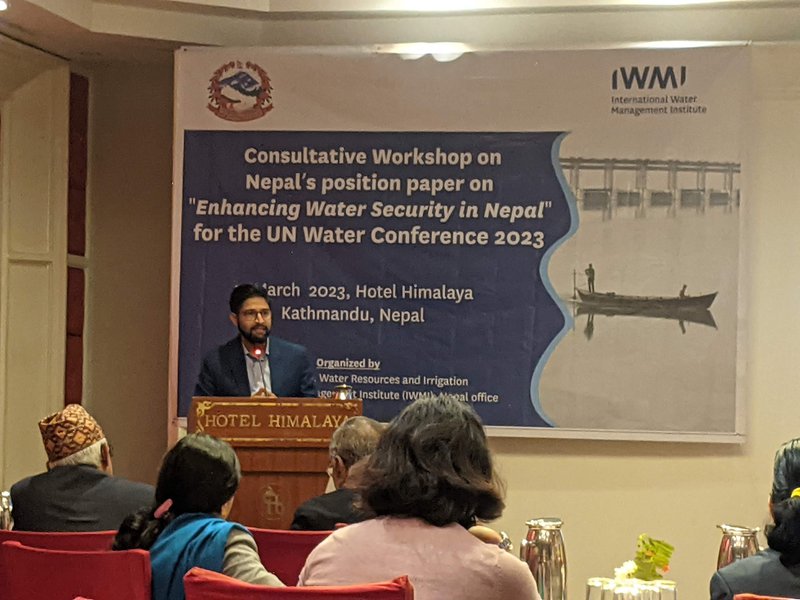
Dr. Nepal also outlined crucial tactics for achieving this goal. "Cross-sectoral collaboration is essential to guaranteeing Nepal's water security. Before attending the UN Water Conference in 2023, the government of Nepal convened a consultative workshop to review their position paper, according to Dr. Santosh Nepal. In Nepal, the effects of climate change will affect all industries. Agriculture-related problems cannot be handled by focusing solely on the agricultural industry. The management of watersheds, spring conservation, groundwater recharge, and glacier melting all have an impact on the amount of water available for agriculture. Climate change will have an impact on all of these. Hence, it will be difficult to address the effects of climate change and associated adaptation strategies without cross-sectoral coordination.
Nepal's position paper is clear on the country's stand. “Achieving a balance between water uses for development and the environment is a critical issue
for global water security. It is imperative to manage and develop water resources with a focus on ensuring water security, considering both benefits and risks associated with water usage. However, water security is challenged by the impacts of climate change, such as rising temperatures, melting glaciers, changing precipitation patterns, floods and droughts. Furthermore, other socio-economic changes such as migration and managing water demand for other competing water sectors are exacerbating water security challenges. In Nepal’s context, enhancing water security requires managing water resources in sectors that have major water usage, such as domestic, agricultural, hydropower and industrial sectors, while maintaining water requirements for environmental usage as well as minimizing the risk of disasters as defined by Nepal.”
Nepal is making every effort to submit its case at the conference, which is a once-in-a-generation opportunity to unite the globe around fixing the water and sanitation crises, as World Water Day is being observed concurrently with the beginning of the UN 2023 Water Conference on March 22-24.
The position paper intends to spur political momentum for SDG 6 implementation and mobilize water action. The article also discusses all of the important topics, including water for collaboration, water for sustainable development, and water for the environment and climate resilience.
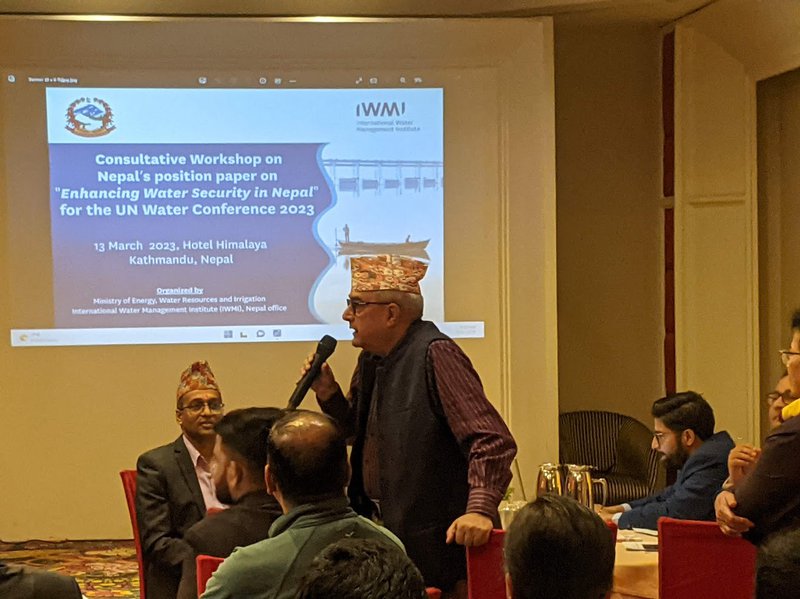
Dr. Khadka, a country representative, Pragya Deepak Gyawali (NAST), and Baral, Deputy Director General Department of Water Resources and Irrigation, facilitated the discussion leading three different groups in three themes, which was vigorous.
The participants representing energy, climate, irrigation, and water and sanitary issues engaged in extensive discussion on the agenda, from Dr. Prachanda Pradhan, the pioneer of the community irrigation program, to secretary Sigdel and other youthful stakeholder groups.
Gyawali stated that the position paper addressed all water-related concerns, including SDG 6. According to Gyawali, this research takes a comprehensive approach to water while taking the long-term effects of climate change into account.
Nepal's position paper for the UN 2023 Water Conference, which will take place in one week, has already been finished after long discussions between the government, civil society, and international organizations. MoEWRI has been prepared to participate in the conference and host a side event as a key ministry for the UN 2023 water conference.
"The MoEWRI has created a position paper to summarize the state of the existing situation and the priorities moving forward. It provides an overview of Nepal's water resources, the problems and difficulties associated with their management, and solutions for ensuring water security throughout the nation."
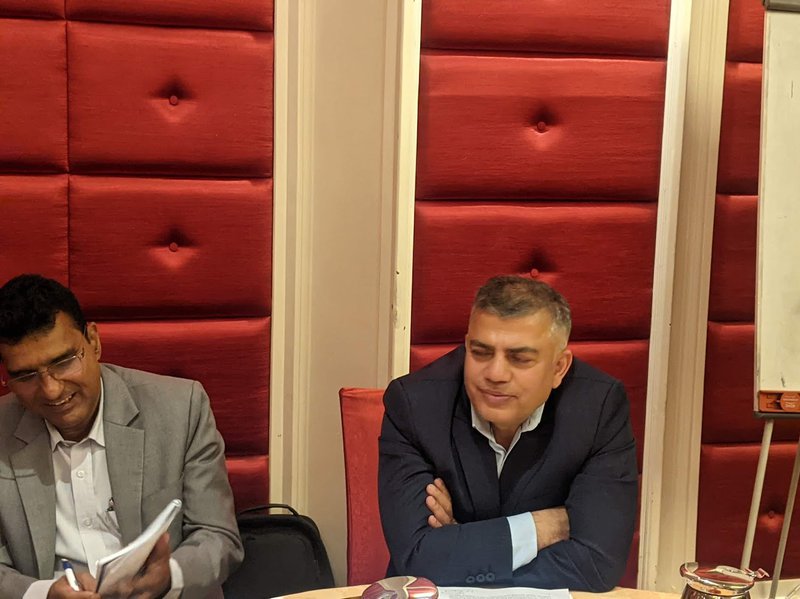
The overview of Nepal's water resources, problems with managing them, development, and strategies for achieving water security are all highlighted in the country's position paper for the UN Water Conference in 2023.
Nepal's position paper, along with others, expressed the commitment regarding the use of water and its sanitation, accelerating progress on SDG 6 and other internationally agreed-upon water-related goals and targets. It was prepared and finalized through intensive interaction among government officials, development organizations, civil society organizations, and research institutes.
In his introductory remarks, Sanjeeb Baral, Deputy Director General of the Department of Water Resources and Irrigation (WDRI), provided a brief explanation of the position paper created by water experts in Nepal. He claimed that in this workshop, conversations and feedback from numerous stakeholders might enrich the Position paper.
According to Baral, the goal of this position paper is to draw attention to Nepal's growing water security concerns, offer answers to the problems associated with managing and developing water resources, and advance inclusive socioeconomic development.
The first UN Water Conference took place in 1977, and the second one will take place in 2023. The conference will put a special emphasis on integrated water resource management and sustainable development in order to achieve social, economic, and environmental goals. The meeting intends to spur political momentum for SDG 6 implementation and promote water action. Five major topics will be covered at the conference: Water is important for a variety of reasons, including I health; ii) sustainable development; iii) environment; iv) cooperation; and v) the water action decade.
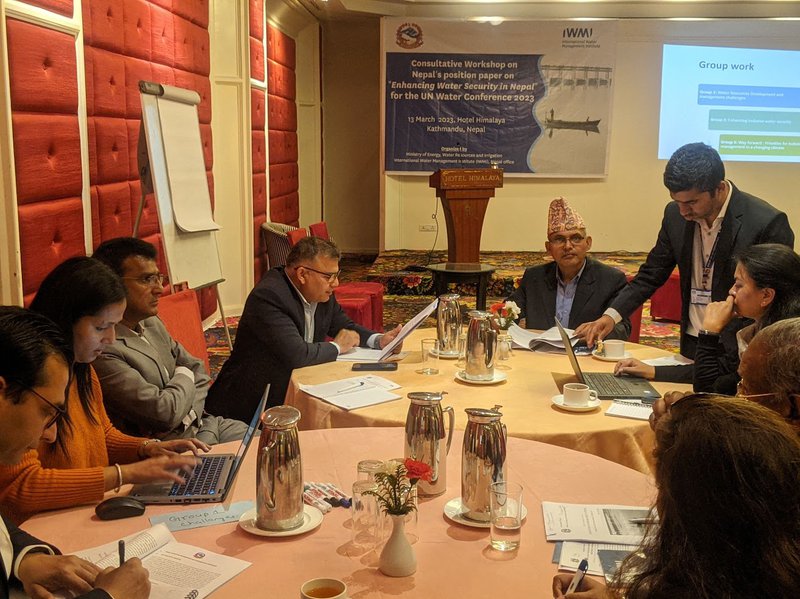
As a key ministry for the UN 2023 water conference, the Ministry of Energy, Water Resources, and Irrigation (MoEWRI) has been preparing to attend the conference and also host a side event.
The first UN Water Conference took place in 1977, and the second one will take place in 2023. The conference will put a special emphasis on integrated water resource management and sustainable development in order to achieve social, economic, and environmental goals.
The most recent figures indicate that countries must work four times as quickly on average to reach SDG 6 on time, however, this is a problem that cannot be resolved by one actor or group.
2 billion people globally, or 1 in 4, lack access to clean drinking water. Everyone is impacted by water, so action is required from everyone.
In the four months of the South Asian monsoon and the remaining eight months of the year, Nepal experiences a water shortage. The Department of Hydrology and Meteorology's rainfall data supports Nepal's uneven water allocation.
With rising flooding in some parts and water scarcity in others, Nepal is extremely sensitive to climate change. A mere 3 percent improvement from 2000, just 27% of the population has access to safely regulated water. Even though 62 percent of the population has access to at least basic sanitation services, access to safely managed sanitation is still limited across the nation.
From the perspectives of water and sanitation, water-energy-agriculture, and other uses, Nepal's Status Paper focused on routes to water security that start with activities and policies connected to other sectors.
Despite being one of the most mountainous nations on earth, Nepal suffers from severe water shortages in several parts of the country. More important than getting clean water is getting enough water for the majority of Nepalese. The majority of people have access to piped water, while 30% still use hand pumps and a fifth still gather water from dangerous boreholes or open sources.
The position paper for Nepal was created by the Ministry with assistance from IWMI Nepal and can balance all the problems that pertain to integrated water management. As a nation vulnerable to water-induced disasters, the conference's adaption of the resolution is equally crucial.

Keshab Poudel
Poudel is the editor of New Spotlight Magazine.
- FOURTH PROFESSOR Y.N. KHANAL LECTURE: Nepal-China Relations
- Jun 23, 2025
- Colonel JP CROSS: Centenary Birthday
- Jun 23, 2025
- REEEP-GREEN: Empowering Communities with MEP
- Jun 16, 2025
- BEEN: Retrofitted For Green
- May 28, 2025
- GGGI has been promoting green growth in Nepal for a decade: Dr. Malle Fofana
- May 21, 2025




